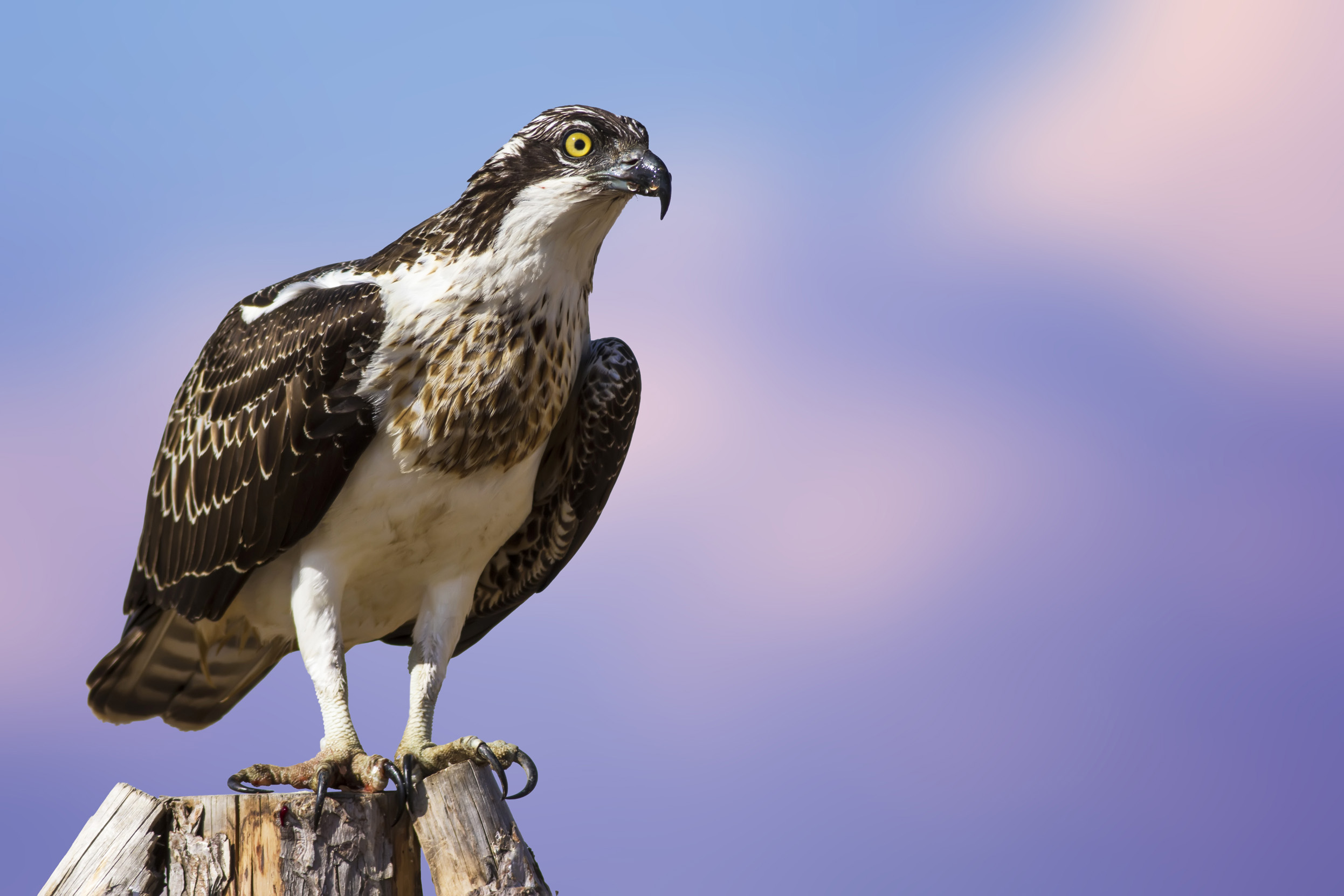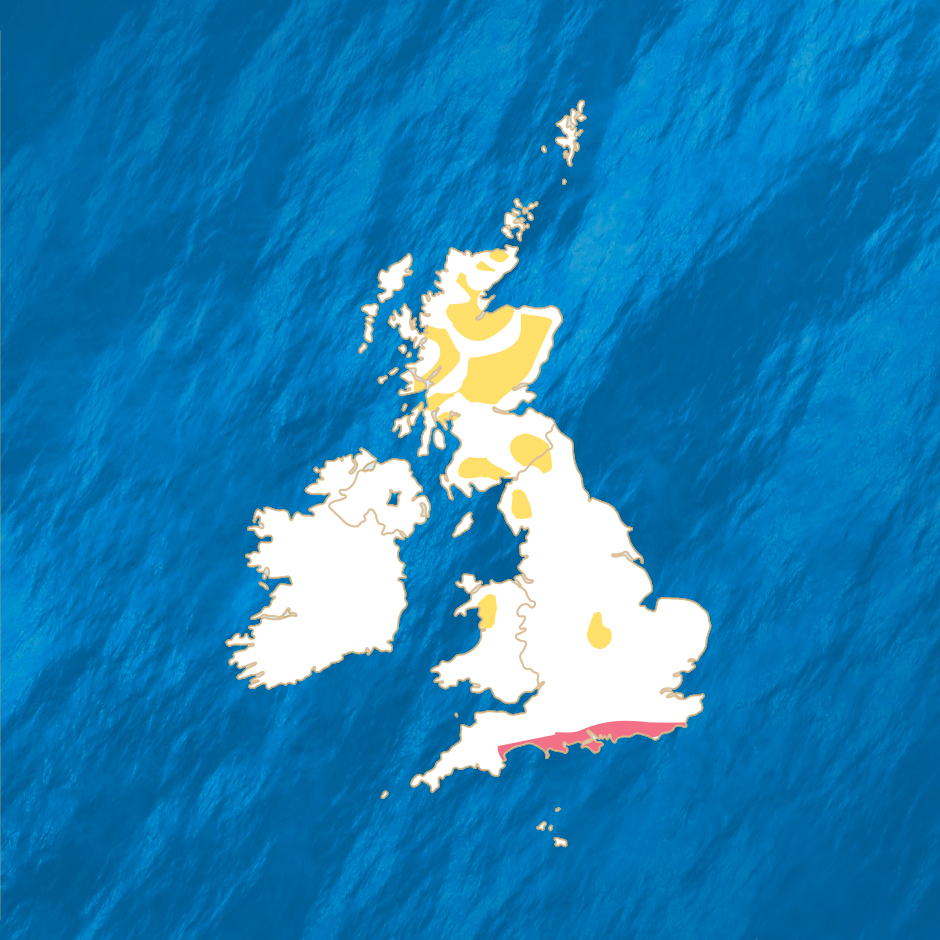How to identify
When seen in flight from below, the Osprey has white or slightly mottled underparts. The wings are angled, bending at the 'wrist' (middle) which has a black patch contrasting with the white wing linings and, at a distance, it could be mistaken for a large gull.
This spectacular fish-eating bird of prey is an Amber List species because of its historical decline (due to illegal killing) and low breeding numbers. They are listed as a Schedule 1 species on The Wildlife and Countryside Act. Key
- Resident
- Passage
- Summer
- Winter
* This map is intended as a guide. It shows general distribution rather than detailed, localised populations. - Jan
- Feb
- Mar
- Apr
- May
- Jun
- Jul
- Aug
- Sep
- Oct
- Nov
- Dec

